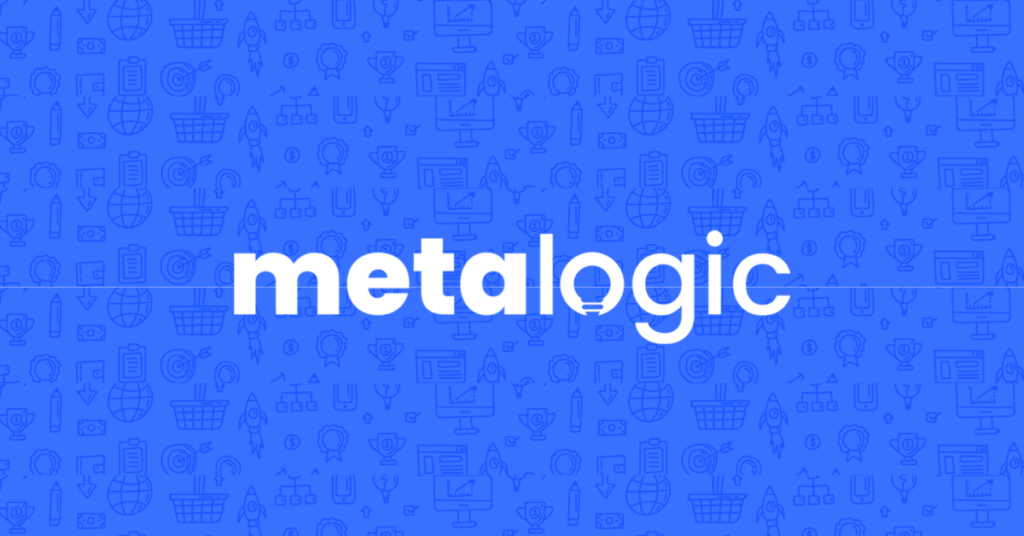Google Ads Audiences

Nick Czerwinski
PPC & Local SEO Specialist
Google Ads is one of the most powerful advertising platforms available for businesses of all sizes. With over 246 million unique visitors daily, Google Ads offers a massive potential audience for companies looking to reach new customers and grow their brands. However, targeting the right audience with your ads can take time and effort with so many potential viewers. This is where Google Ads audience targeting comes in.
Google Ads audience targeting allows you to reach specific groups of people based on their interests, behaviors, demographics, and more. By creating custom audiences, you can show your ads to the right people at the right time, improving your chances of converting clicks into customers.
In this blog, we will explore the different types of audiences available in Google Ads, how to create and use them effectively, and best practices for optimizing your audience targeting strategy. Whether you’re new to Google Ads or a seasoned pro, understanding how to use audience targeting effectively is essential for any successful advertising campaign.
What Are Google Ads Audiences?
Google Ads audiences are groups of users that have been identified based on specific criteria, such as their interests, behaviors, or demographics. These audiences can be created and saved within your Google Ads account and used to target your ad campaigns more effectively.
There are several types of Google Ads audiences available, including:
Affinity audiences: These are broad audiences of users who have demonstrated a strong interest in a particular topic. For example, if you’re selling outdoor gear, you may want to target users who have shown an affinity for camping or hiking.
In-market audiences: These audiences consist of users actively searching for products or services in a specific category. For example, if you’re selling home appliances, you may want to target users who are in-market for refrigerators or washing machines.
Custom audiences: These audiences are created based on your data, such as website visitors, customer lists, or app users. Custom audiences can be highly targeted and effective for remarketing campaigns.
Similar audiences: These audiences are created based on the characteristics of your existing audiences, such as custom audiences or remarketing lists. Similar audiences can help you expand your reach to users who share similar interests or behaviors with your existing audience.
Demographic audiences: These audiences are based on specific demographic criteria, such as age, gender, household income, or education level. Demographic audiences can help you target users who are most likely to be interested in your products or services.
Using Google Ads audiences, you can target your ad campaigns more effectively and reach the right users at the right time. With the right targeting strategy and audience combinations, you can improve your ad relevance, increase your click-through rates, and drive more conversions for your business. In the next section, we’ll explore how to create audiences in Google Ads.
Affinity Audiences
Affinity audiences are groups of users who have demonstrated a strong interest in a particular topic, such as travel, sports, or fashion. These audiences are created based on the websites and content that users have interacted with across the Google Display Network.
The benefits of using affinity audiences in your Google Ads campaigns are:
Broad reach: Affinity audiences can help you reach a large number of users who are interested in a particular topic or niche.
Brand awareness: You can increase your brand exposure and awareness by targeting users with a strong interest in your product or service category.
Relevance: Since affinity audiences are based on user’s interests and behaviors, your ads are more likely to be relevant to them, leading to higher engagement and click-through rates.
Honestly, I consider him part of my Team as well, he really cares about our success. As we grow, he will grow with us. I’m excited about the journey and future with Mike and his Team at Metalogic! If you’re looking at Internet Marketing for your business, simply put he’s the best!

Chris Chustz
Owner, Family First Mortgage
In-Market Audiences
In-market audiences are users actively searching for products or services in a specific category, such as travel, real estate, or automotive. These audiences are created based on users’ recent search behavior and purchase intent signals.
The benefits of using in-market audiences in your Google Ads campaigns are
High intent: In-market audiences have demonstrated a high level of interest and intent to purchase within a specific product or service category, which can lead to higher conversion rates.
Targeted reach: In-market audiences can help you reach users who are actively searching for the products or services you offer, increasing the likelihood of conversions.
Lower cost-per-click: Since in-market audiences are highly targeted, your ad spend is more likely to be focused on users who are likely to convert, leading to a lower cost-per-click
Custom Audiences
Custom audiences are groups of users that you create based on your data, such as website visitors, customer lists, or app users. These audiences are highly targeted and can be used for remarketing campaigns.
The benefits of using custom audiences in your Google Ads campaigns are:
High relevance: Since custom audiences are based on your own data, your ads are more likely to be relevant to these users, leading to higher engagement and conversion rates.
Increased loyalty: You can increase loyalty and repeat purchases by targeting users who have already interacted with your brand.
Cross-selling opportunities: Custom audiences can also target users who have purchased one product or service but may be interested in related or complementary products or services.
Similar Audiences
Similar audiences are groups of users who share similar interests and behaviors with your existing audiences, such as custom audiences or remarketing lists. These audiences can help you expand your reach to new users likely interested in your products or services.
The benefits of using similar audiences in your Google Ads campaigns are:
Expanded reach: Similar audiences can help you reach new users likely to be interested in your products or services, increasing your overall reach.
Increased conversions: By targeting users who share similar interests and behaviors with your existing audiences, you can increase the likelihood of conversions.
Lower cost-per-acquisition: Since similar audiences are based on users similar to your existing customers, your ad spend is more likely to be focused on users who are likely to convert, leading to a lower cost-per-acquisition.
Demographic Audiences
Demographic audiences are groups of users who share specific demographic characteristics, such as age, gender, household income, or education level. These audiences can be used to target users who are most likely to be interested in your products or services.
The benefits of using demographic audiences in your Google Ads campaigns are:
Highly targeted: Demographic audiences can help you target users who are most likely to be interested in your products Increased relevance: By targeting users based on their demographic characteristics, your ads are more likely to be relevant to them, increasing the likelihood of engagement and conversion.
Cost-effective: Demographic audiences can help you save ad spend by targeting specific groups of users who are most likely to be interested in your products or services.
Improved ROI: Since demographic audiences are highly targeted, your ad spend is more likely to be focused on users who are likely to convert, leading to a higher return on investment.
Remarketing Audiences
Remarketing audiences are groups of users who have previously interacted with your website or app, such as website visitors, app users, or YouTube viewers. These audiences can be used to target users who have already expressed an interest in your products or services, increasing the likelihood of conversion.
The benefits of using remarketing audiences in your Google Ads campaigns are:
Increased conversion rates: By targeting users who have already interacted with your brand, you can increase the likelihood of conversions and repeat purchases.
Personalization: Remarketing audiences can be used to show personalized ads to users based on their previous interactions with your brand, increasing the relevance and effectiveness of your ads.
Cost-effective: Since remarketing audiences are highly targeted, your ad spend is more likely to be focused on users who are likely to convert, leading to a lower cost-per-acquisition.
Using the different types of Google Ads audiences can help you increase the effectiveness of your campaigns by reaching the right users at the right time with relevant and personalized ads. By understanding the benefits of each audience type, you can make informed decisions about which audiences to use for your specific marketing goals and target audience.
Custom Marketing Plans Starting at $500 / month
How to Create Google Ads Audiences
Creating a Google Ads audience is a straightforward process. Here are the steps you need to follow:
Step 1: Sign in to your Google Ads account and navigate to the “Audiences” tab.
Step 2: Click the blue plus button to create a new audience.
Step 3: Choose the type of audience you want to create. You can choose from the following options:
Affinity audiences: These audiences are based on user’s interests and habits and are designed to reach people interested in a particular topic.
Custom intent audiences: These audiences are created based on user search data and are designed to reach people actively searching for products or services related to your business.
In-market audiences: These audiences are based on users’ recent purchases or browsing history and are designed to reach people actively in the market for a particular product or service.
Remarketing audiences: These audiences are based on user’s previous interactions with your website, app, or ads and are designed to reach people who have already shown an interest in your business.
Similar audiences: These audiences are created based on users identical to those in your remarketing list.
Step 4: Configure the settings for your audience. Depending on your audience type, you may be asked to enter information such as keywords, URLs, or interests.
Step 5: Set your audience targeting options. You can target your audience by geographic location, language, device type, etc.
Step 6: Save your audience and apply it to your campaigns.
Creating a custom intent audience is slightly different from other audiences. When creating a custom intent audience, you must enter a list of keywords or URLs relevant to your business. Google Ads will then use this information to find users actively searching for products or services related to your business.
By following these steps, you can create highly targeted audiences designed to reach the right people at the right time, which can help improve the overall performance of your Google Ads campaigns.
Targeting Google Ads Audiences
Once you have created your Google Ads audience, it’s time to target it. Targeting your audience allows you to show your ads to the people who are most likely to be interested in your business. Here are some targeting options you can use:
Keyword Targeting: Keyword targeting allows you to show your ads to people who are searching for specific keywords on Google. This targeting option is available for custom intent audiences and in-market audiences.
Geographic Targeting: Geographic targeting allows you to show your ads to people in specific geographic locations. You can target your ads in the country, region, city, or even a specific radius around a location.
Demographic Targeting: Demographic targeting allows you to show your ads to people based on their age, gender, parental status, household income, and more. This targeting option is available for all audience types.
Device Targeting: Device targeting allows you to show your ads to people using specific devices, such as mobile phones, tablets, or desktop computers. This targeting option is available for all audience types.
Time of Day Targeting: Time-of-day targeting allows you to show your ads to people during specific times of the day or week. This targeting option is available for all audience types.
Placement Targeting: Placement targeting allows you to show your ads on specific websites or apps relevant to your business. This targeting option is available for all audience types.
By using these targeting options, you can ensure that your ads are shown to the right people at the right time, which can help to improve the overall performance of your Google Ads campaigns. When targeting your Google Ads audience, it’s essential to remember the type of audience you have created and its purpose. For example, if you have created a remarketing audience, you may want to target people who have previously visited your website or interacted with your ads. On the other hand, if you have created an in-market audience, you may want to target people who are actively searching for products or services related to your business.
Optimizing Google Ads Audiences
Optimizing your Google Ads audiences is an ongoing process that involves analyzing your data, making changes, and testing new strategies. Here are some tips to help you optimize your audiences for better performance:
Monitor Your Audience Performance: Regularly check the performance of your audiences to see how they are performing. Look at metrics such as click-through rate (CTR), conversion rate, and cost-per-conversion to determine whether your audience is effective.
Refine Your Targeting: Refine your targeting by adjusting your audience settings. For example, you can change your geographic, device, or time of day targeting to reach a more relevant audience.
Test New Strategies: Test new targeting strategies to see what works best for your business. For example, you can test different keywords, interests, or demographics to see which ones drive the best results.
Use Negative Audiences: Negative audiences allow you to exclude certain groups of people from seeing your ads. For example, if you are targeting people who have already purchased from your website, you may want to exclude them from your targeting.
Analyze Your Data: Analyze your data to gain insights into audience performance. Look for patterns or trends that can help you optimize your targeting strategy.
By following these tips, you can continually refine and optimize your Google Ads audiences to improve their performance and drive better results for your business. Optimizing your audiences is an ongoing process, so don’t be afraid to test new strategies and make changes as needed.
Measuring the Success of Google Ads Audiences
Measuring the success of your Google Ads audiences is critical to understanding if your targeting strategy is working effectively. Here are some metrics to consider when measuring the success of your Google Ads audiences:
Click-Through Rate (CTR): CTR is the number of clicks your ads receive divided by the number of impressions they receive. A high CTR indicates that your ads resonate with your audience and are relevant to their search queries.
Conversion Rate: Conversion rate is the number of conversions (such as sales, leads, or sign-ups) divided by the number of clicks on your ads. A high conversion rate indicates that your ads successfully drive people to action.
Cost Per Conversion (CPC): CPC is the total cost of your ads divided by the number of conversions. A low CPC indicates that your targeting strategy is effective and that you are achieving your goals while keeping costs low.
Return on Ad Spend (ROAS): ROAS is the amount of revenue generated from your ads divided by the cost of your ads. A high ROAS indicates that your ads are generating revenue that exceeds the cost of running them.
Audience Insights: Audience insights allow you to understand your audience better and make informed decisions about your targeting strategy. Look at metrics such as age, gender, location, and interests to understand who your audience is and what drives their behavior.
By tracking these metrics, you can measure the success of your Google Ads audiences and make data-driven decisions about your targeting strategy. Keep in mind that measuring success is an ongoing process, so be sure to regularly check your metrics and adjust your strategy as needed to drive better results for your business.
Troubleshooting Common Issues with Google Ads Audiences
Even the most well-planned targeting strategy can run into issues. Here are some common problems with Google Ads audiences and how to troubleshoot them:
Low Click-Through Rate: If you have a low CTR, it could indicate that your ads are not resonating with your audience. Try updating your ad copy or images to make them more compelling and relevant to your audience.
Low Conversion Rate: A low conversion rate could indicate that your targeting needs to reach the right audience. Try refining your targeting strategy by adjusting your audience settings or testing new targeting options.
High Cost Per Conversion: If your CPC is too high, it could indicate that your targeting is too broad, or your ads need to resonate with your audience. Try refining your targeting strategy by adjusting your audience settings or testing new ad copy or images.
Poor Audience Quality: If you see good results from your audiences, it could indicate that your targeting could be more effective. Look at your audience insights and adjust your targeting strategy to reach a more relevant audience.
Audience Exhaustion: If you have been targeting the same audience for a long time, they may become exhausted and less responsive to your ads. Try refreshing your targeting strategy by testing new audiences or targeting options.
By troubleshooting these common issues, you can improve the performance of your Google Ads audiences and achieve better results for your business. Remember, optimizing your targeting strategy is an ongoing process. Be patient and willing to make adjustments as needed to reach your goals.
Best Practices for Google Ads Audience Targeting
To make the most of your Google Ads audiences, it’s essential to follow best practices. Here are some best practices to consider when using Google Ads audiences:
Start with a Clear Objective: Before creating an audience, define your objective for the campaign. Do you want to drive sales, increase website traffic, or generate leads? Defining your goal will help you choose the right audience and targeting strategy.
Use Relevant Keywords: Use relevant keywords in your ads and targeting strategy to reach a more relevant audience. Consider using broad, phrase, or exact match keywords to refine your targeting.
Create Custom Audiences: Use custom audiences to reach people who have interacted with your business. For example, you can create a custom audience of people who have visited your website or added items to their shopping cart.
Use Lookalike Audiences: Lookalike audiences allow you to reach people who are similar to your existing customers. Use lookalike audiences to expand your reach and find new customers likely interested in your business.
Use Ad Scheduling: Ad scheduling to target your audience at the right time. Consider the time of day, day of the week, and your audience’s location when scheduling your ads.
Test Your Strategy: Test your targeting strategy regularly to determine what works best for your business. Consider testing different ad formats, targeting options, and messaging to see what drives the best results.
By following these best practices, you can create influential Google Ads audiences and reach the right people at the right time. Remember, optimizing your targeting strategy is an ongoing process, so be willing to adjust and test new strategies to achieve better results for your business.
Conclusion
Google Ads audiences are a powerful tool for reaching your target audience and driving results for your business. By creating custom and lookalike audiences, refining your targeting strategy, and measuring your success, you can achieve your advertising goals and drive growth for your business.
Remember to start with a clear objective and choose the right targeting strategy based on your campaign goals. Use relevant keywords, ad scheduling, and testing to optimize your targeting strategy and reach the right people at the right time. And always track your key metrics and analyze your data to measure the success of your campaigns and refine your approach.
With these best practices in mind, you can create effective Google Ads audiences that drive results for your business. As with any digital marketing strategy, it’s important to stay up-to-date on the latest trends and best practices, so continue to explore new tactics and optimize your approach to stay ahead of the competition.
We hope this guide has helped you understand the basics of Google Ads audiences and how to use them effectively. By following these tips and best practices, you can create successful Google Ads campaigns that drive growth and help your business achieve its goals.
Become A Google Ads Specialist With MetaLOGIC's Local Digital Marketing Academy
Get your business in front of the right people with Google Ads. From display and search campaigns to Shopping and video campaigns, there’s a way to reach your target audience on the Google Ads platform. Don’t wait to see results – Learn more about our Google Ads Online Training Course.








